|
|
|

|
Homicide rates recently declined to levels last seen
in the late 1960's
|
 To
the top
To
the top |
|
|
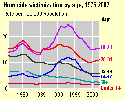
|
The rise in teen involvement in homicide as both victims
and offenders beginning in the mid-1980's was dramatic
|
 To the top
To the top |
|
|
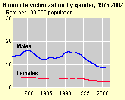
|
Most victims and perpetrators in homicides are male
|
 To the top
To the top |
|
|

|
Racial differences exist, with blacks disproportionately represented
among homicide victims and offenders
|
 To the top
To the top |
|
|

|
Dramatic increases in both homicide victimization
and offending rates were experienced by young males, particularly young
black males, in the late 1980's and early 1990's
|
 To the top
To the top
|
|
|
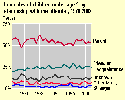
|
The number of homicides of children under age 5 increased over the
past two decades but declined recently
|
 To the top
To the top
|
|

|
The number of homicides of persons age 65
or older has been decreasing
|
 To the top
To the top
|
|

|
There has been a decline in homicide
of intimates, especially male victims
|
 To the top
To the top
|
|
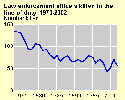
|
The number of law enforcement officers killed in the line
of duty has declined since the early 1970's
|
 To the top
To the top
|
|
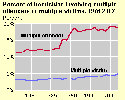
|
Few homicides involve multiple offenders and fewer involve multiple
victims
|
 To the top
To the top |
|

|
The mix of circumstances surrounding homicides has changed over
the last two decades
|
 To the top
To the top |
|
 |
Homicides are most often committed with guns,
especially handguns
|
 To the top
To the top
|
|
|

|
The southern regions historically have had higher homicide rates
than other regions
|
 To the top
To the top
|
|
|

|
Changes in homicide trends have been driven by changes in the
number of homicides in large American cities
|
 To the top
To the top |
|
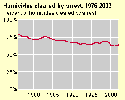
|
The percentage of homicides cleared by arrest has been declining
|
 To the top
To the top |
|

|
The number of justifiable homicides has been declining
|
 To the top
To the top |
Additional information
about the data
Data sources, methodology, and related sites
|